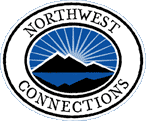
|
|
Northwest Connections |
| Community Based Conservation and Education |
|
|
|
|
|
|
|
|
|
|
|
|
|
|
|
|
Northwest Connections (NwC) involves local people in the conservation of critical habitat linkages within the Swan Valley and across surrounding forested ecosystems.
This site was last updated on 08/17/07.
© Copyright 2007 Northwest Connections. All rights reserved.